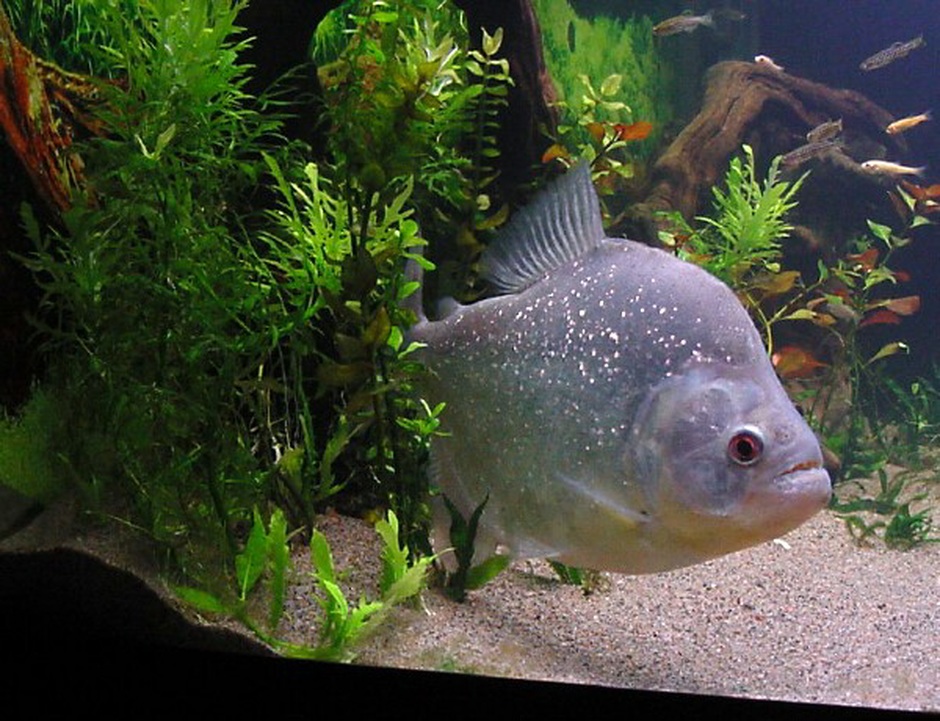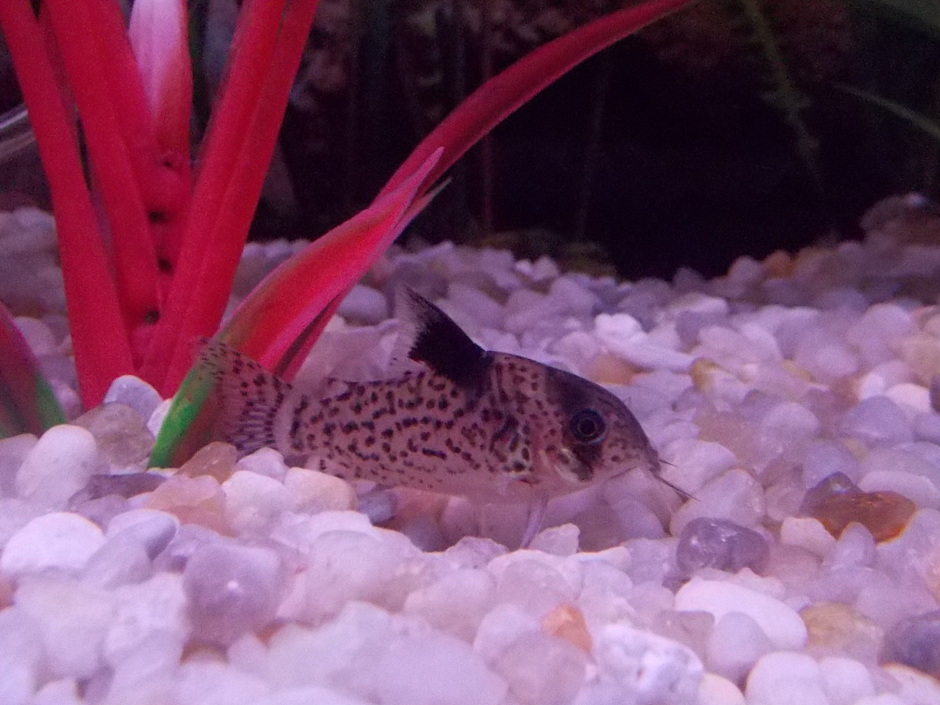CULTIVATING AN AMAZON BIOTOPE TANK

Updated
If you are looking for a challenge, consider cultivating an Amazon biotope tank.
When it comes to cultivating a home aquarium there are many types to choose from. Aside from the standard freshwater community tank, another interesting option is a biotope tank. You don’t have to be an expert aquarium hobbyist to cultivate a biotope tank – all you have to do is perform a little research and then set up the tank to the proper specifications.
A biotope tank is simply an aquarium environment set up to mimic a particular type of natural habitat. Some popular biotope tank types include brackish water estuaries, African rift lakes and coastal streams. One of the best types of biotope tank to start out with, however, is an Amazon biotope tank. It is not difficult to achieve and maintain the water parameters necessary for a healthy Amazon tank and there are a wide variety of fish and plant species to choose from that live in Amazon River habitats, so stocking the tank is not much of a challenge. If you are looking for a way to take the next step in your journey as an aquarium hobbyist, consider cultivating an Amazon biotope tank!
Types of Amazon Biotopes
The Amazon River Basin encompasses a vast region throughout South America so there are a wide variety of types of Amazon biotopes to choose from. You will find a list of the different Amazon biotopes below:
Whitewater River = This type of environment has a high concentration of suspended sediment which give the water a muddy appearance. The water is slightly soft, having an acidic to neutral pH ranging between 6.3 and 7.0. The tank should be decorated with plenty of driftwood roots and branches, though adequate space should be left open for swimming. Dark sand or fine gravel substrate is recommended along with a few inches of leaf litter.
Recommended Species: Acaras, Oscars, Angelfish, Piranhas, Hatchetfish, Tetras, Corydoras catfish

Clearwater Stream = South American clearwater streams, as suggested by the name, are typically clear. The water may be either fast- or slow-flowing depending on the location and many drain from the highlands throughout the Amazon River basin. The two most well-known clearwater rivers in South America are the Rio Xingu and the Rio Tocantins. To cultivate this type of tank environment you should keep the pH between 6.9 and 7.3 with a general hardness around 5 to 12 dH. The temperature should remain steady between 75 and 82F and quality filtration is important to keep the water clear.
Recommended Species: Corydoras catfish, Loricarid catfish, Discus fish, Pike cichlids
Blackwater Stream = South American blackwater streams originate in the rainforest and thus have a great deal of accumulated leaf litter. Because the water is slow-moving, acids (called tannins) are continuously leeched from the decaying vegetation which gives the water a transparent tea-colored hue. The water in a blackwater stream is typically soft with an acidic pH between 4.5 and 6.5. The recommended substrate for a blackwater stream tank is fine clay or sand covered with a few inches of leaf litter. Lighting should be subdued and filtration somewhat slow.
Recommended Species: Angelfish, Discus fish, Tetras, Corydoras catfish, Dwarf cichlids, Hatchetfish
Oxbow Lake = An oxbow lake is a type of crescent-shaped lake that forms when a river changes course – most lakes in the Amazon are oxbow lakes. Most oxbow lakes in the Amazon region have a pH between 5.4 and 6.8 and a temperature in the range of 76 to 80F. The substrate is generally mud with a great deal of accumulated organic matter and leaf litter which, combined with minimal water current, makes the water somewhat cloudy. To recreate this type of biotope in your home aquarium, keep filtration to a minimum and decorate the tank with dense areas of planting along the back and sides of the tank, leaving and middle open for swimming.
Recommended Species: Hatchetfish, Tetras, Piranhas, Pike cichlids, Catfish and Freshwater stingray

Rainforest Stream = Small rainforest streams are very common throughout Peru and they range in size from just a few inches wide to 14 feet across near the Amazon headwaters. Rainforest streams are typically no more than 3 miles long and their depth ranges from a few centimeters deep to more than 5 feet deep. This type of stream exhibits a relatively constant temperature since the water is typically shaded by the forest canopy – rainforest streams are usually 1 to 2 degrees cooler than river channels. Rainforest streams vary in water chemistry from one stream to another, exhibiting pH levels between 3.8 and 4.9. The substrate in rainforest streams is usually mud or sand over a layer of organic matter and decaying vegetation. There are relatively few plants in rainforest streams because they are so shaded – some plant species that might survive in this type of environment include Amazon sword and Vallisneria.
Recommended Species: Pike Cichlid, Glowlight Tetra, Peru Darter Tetra, Festive Cichlid, Moenkhausia sp, Pyrrhulina sp., Corydoras aeneus
Tips for Setup
As is true when setting up any type of aquarium, it is important that you perform some basic research before you begin. Not only should you determine the ideal water parameters for your tank but you also need to think about what type of fish you are going to stock it with. When selecting fish for an Amazon biotope tank you need to be very careful – fish that are not native to the Amazon River region may not be compatible with the water parameters in this type of tank. Keep in mind that different types of Amazon biotopes may have different water chemistry, so make sure all of the fish you choose can survive in the specific biotope you choose to simulate.

You should also carefully consider how you are going to decorate your tank. To achieve an authentic, natural-looking biotope aquarium you should stick to natural decor elements such as sand or gravel substrate, live aquarium plants and standard decorations like rocks and driftwood. The type and arrangement of decorations you use may depend on the particular biotope you choose to cultivate. Try to use sand or gravel substrate in your Amazon biotope tank and consider pairing it with soil or some other planting substrate that will fertilize your live plants. Add some depth to your tank by using large rocks or pieces of driftwood to occupy vertical space in the tank and to give your fish some areas to explore. You may even want to look into anchoring some live plants to pieces of driftwood.
Whether you are a novice aquarium hobbyist or an expert, cultivating an Amazon biotope aquarium is a fun challenge. Not only will you learn a great deal about the native habitat of your fish, but you will be able to enjoy watching them thrive in a natural, authentic environment.
comments powered by Disqus






































































































































